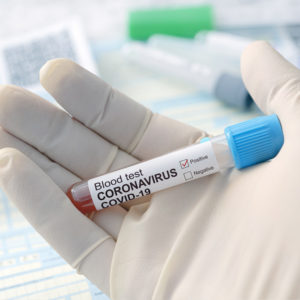With fall approaching, the devastation from COVID-19 cannot be understated.
In the United States, the case total has topped 6 million; the number of deaths will soon pass 200,000. Not to mention the attendant disruption of children’s education and the concurrent economic havoc.
This is all a result of a microscopic coronavirus, the agent responsible for COVID-19. Everywhere, the best minds in medicine, epidemiology, public health and virology work assiduously to understand the COVID-19 coronavirus — with tremendous advances. But as any good scientist readily acknowledges, the more we learn, the less we know, because knowledge makes the subject infinitely more complex.
Here are four areas of significant uncertainty despite nearly a year of experience with the coronavirus:
Mode of transmission:
The virus is disseminated two ways: through the air and less commonly through contact with contaminated surfaces. COVID-19 is known to spread primarily by respiratory droplets produced by close talking, sneezing or coughing. These droplets travel up to six feet before drying out or falling to the ground.
Recently, another form of airborne transmission, aerosol, has been proposed by an international group of 239 scientists in the journal Clinical Infectious Diseases. Aerosols, much smaller particles than droplets, emanate from a person’s mouth, remain in the air longer and travel greater distances, especially indoors. How common is aerosol spread? Unknown.
But the scientists propose greater measures to prevent this risk by improving indoor ventilation in public buildings, workplaces, schools, hospitals and nursing homes. They advocate supplementing indoor air with clean outdoor air, minimizing recirculation, and employing high-efficiency air filtration and germ-killing ultraviolet lights.
Community immunity:
When a significant percentage of a community becomes immune to a contagious disease, because of previous infection and having been vaccinated, the spread of the disease (e.g. polio or measles) becomes less likely. If a vaccine is available, protection by community immunity depends on the percentage of people vaccinated and the percentage who have already acquired the disease.
With no vaccine available, as is currently the case with COVID-19, we are not close to community immunity, which would require a high percentage, perhaps 60 percent to 70 percent of the population to be immune from infection.
Now more than a dozen scientists, in interviews with The New York Times published in August, said the threshold is likely to be much lower: just 50 percent, perhaps even less. They speculate that community immunity may be achieved with a lower percentage of people infected — provided that adequate mitigation measures are followed.
They do not advocate trying to achieve this as policy, merely as a possible explanation why in some places, like areas of New York City, London and Mumbai, once extremely high infections rates have fallen precipitously.
Vaccines:
Control of most viral infections, especially those formerly the scourge of childhood, depends on development, manufacture and deployment of effective vaccines. A safe COVID-19 vaccine is likely to be crucial for global control of the pandemic. A wide range of COVID-19 vaccine candidates are in various stages of development worldwide; in the United States three are currently in Phase 3 clinical trials (the last step before public release).
The precise safety and effectiveness of these vaccines must be established before emergency use can be authorized, but the process is difficult, especially considering the limited amount of data that can be amassed in a short time. Other unknowns include the extent and durability of immunity the vaccine will confer and of course, what proportion of the public will agree to vaccination.
Reopening schools:
At some point, schools must reopen. School is essential to childhood growth — mental, social and emotional — but there is considerable uncertainty about how much risk is involved with reopening. A related question is how likely are children to transmit the virus to adults in and out of school.
Results to date are unclear — European schools have been reopening but it is too early to tell the extent of their success. Experience with American universities has been disappointing, with clusters of infections reported even before classes begin. Campus partying and alcohol do not lend themselves to a safe environment.
Reopening will require novel approaches. Younger children appear to be more resilient when infected, but while safe, they are not absolutely safe (children are never absolutely safe in terms of communicable diseases). Initial reopenings may be more successful with younger students, perhaps kindergarten through fifth grade.
Rapid saliva tests to facilitate frequent testing may soon become the norm. The University of Illinois currently requires testing twice per week of all faculty, staff and students.
It is unconscionable that no one in government has advocated open-environment tent schools in warmer regions and in the north before the weather turns inclement. In the early part of the 20th century, more than 100 cities operated open-air schools, with the intention of preventing tuberculosis.
These are only some areas where there are no definitive answers about COVID-19. Uncertainty exists about which treatments are effective, exactly how the virus spreads through different regions of the country, and the complicated equation of excess deaths which includes delays in treatment of other diseases as well as diseases of despair (subtracting the reduced deaths from events like automobile and vehicular accidents).
The German writer Johann Wolfgang von Goethe once said, “Everything is simpler than you think and more complex than you can imagine.” COVID-19 reminds us how true that is.

